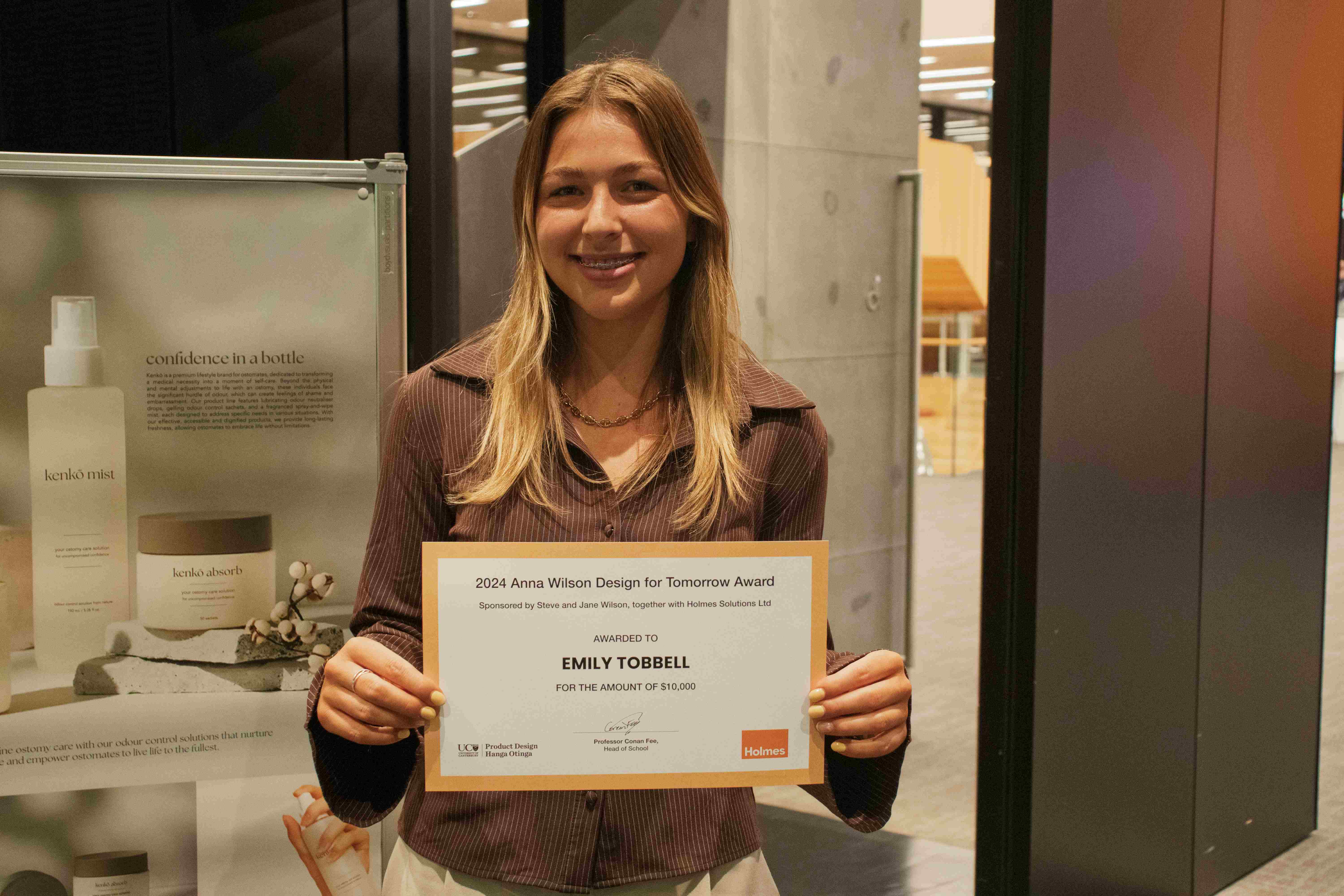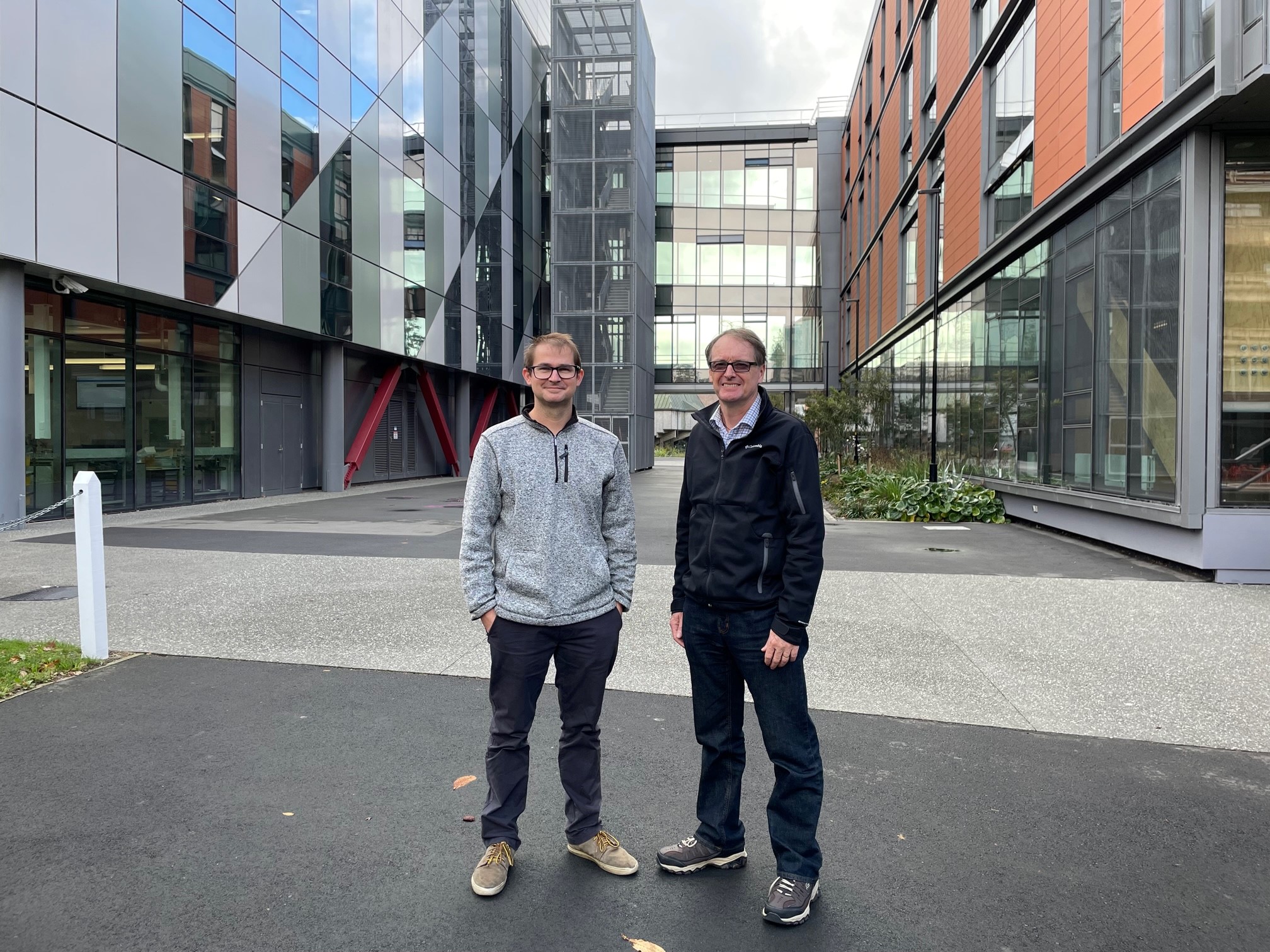Photo caption: The ring laser restoration project celebrated 30 years of international research cooperation, with a recommissioning event at UC’s Ilam campus on 14 November. Among those at the event were the German Ambassador to New Zealand Nicole Menzenbach and Professor Ulrich Schreiber of the Technical University of Munich (TUM), who is also an Adjunct Professor of UC.
After lying under the Port Hills for 12 years post-quake, the C-II (Canterbury 2) ring laser was recovered from the Cashmere Caverns in 2023 and has now been restored and installed at Te Whare Wānanga o Waitaha | University of Canterbury (UC).
The ring laser restoration project celebrates 30 years of international research cooperation, with a recommissioning and opening event held at UC’s Ilam campus recently.
“The ring laser has been the cornerstone of New Zealand–German scientific collaborations for over 30 years,” according to UC’s Acting Deputy Vice-Chancellor Research, Professor Peter Gostomski. “It showcases and exemplifies the amazing research taking place in New Zealand.”
The C-II ring laser was constructed in 1996 by Carl Zeiss in Oberkochen, Germany, and installed in the Cashmere Caverns in 1997 as a part of an internationally leading collaboration in large-scale, rotation-sensing lasers (laser gyroscopes) which measure variations in the Earth’s rotation. In 2011, the caverns were closed following the Christchurch earthquakes and deemed inaccessible due to rockfall, trapping the suite of three ring lasers inside.
“The C-II laser gyro is globally unique,” says Professor Jon-Paul Wells, who leads the research. “It’s not old and tatty – it’s like a beautiful piece of jewellery that’s only increased in value over the years. There is no current capacity to reproduce this device anywhere on the globe.
“It’s particularly known for its mechanical stability so now we can apply modern techniques to measure the Earth’s rotation with this legacy infrastructure.”
UC’s Ernest Rutherford building is now home to the re-commissioned C-II ring laser, which is fully operational again. UC experts restored the ring laser, with support from researchers from the Technical University of Munich.
Representatives from Germany, including the German Ambassador to New Zealand Nicole Menzenbach, the Head of Geodesy at the German Federal Agency for Cartography and Geodesy (BKG) Dr Johannes Bouman, and Professor Ulrich Schreiber of the Technical University of Munich (TUM), attended the opening event at UC on 14 November.
The Dodd-Walls Centre for Photonic and Quantum Technologies director Professor Frédérique Vanholsbeeck also attended. She describes the ring laser as “unique buried treasure.”
“Jon-Paul’s international collaboration with the Technical University of Munich is a great example of the benefits of good infrastructure. This will significantly aid our photonics and quantum technologies research in sensing, precision timing and navigation,” Professor Vanholsbeeck says.
The University of Canterbury is a partner institution of the Dodd-Walls Centre for Photonic and Quantum Technologies which will become the base for national and international collaboration using C-II.
The New Zealand Government supports this initiative, with representatives from the Ministry of Business, Innovation and Employment (MBIE) attending the UC event.
MBIE International Science Partnerships Manager Hugo Bussell says it supported the recovery and recommissioning of the ring laser through the MBIE-administered Catalyst Fund. “Our long-standing research relationship with Germany is vital. The recommissioning of this C-II ring laser is reflective of our resilient, determined, and collaborative relationship.”
Background Q&A
What is a ring laser? What is the C-II ring laser?
A ring laser is an advanced gyroscope used to measure and maintain the orientation of an object in space. Two beams of light travel in opposite directions in a closed loop, allowing for highly sensitive measurements that cannot be achieved in any other way. Small, compact ring lasers are commonly used for accurate navigation in moving vessels like cars, ships, planes, and missiles.
The world's largest ring lasers, such as the C-II (Canterbury 2), can detect details of the Earth's rotation. Such large rings are also capable of extending scientific research in many new directions, including the detection of gravitational waves, Fresnel drag, Lense-Thirring effect, and quantum-electrodynamic effects.
Why was this ring laser in the Cashmere Caverns?
The caverns were secret WWII bunkers, sealed decades ago, and rediscovered in 1988. At this time, the University of Canterbury (UC) was searching for a new site for the international collaboration between the University’s then Physics and Astronomy Department and the Technical University of Munich and the Forschungsgruppe Satelliengeodäsie German Federal Agency for Cartography and Geodesy (BKG) on large-scale, rotation-sensing lasers.
The cavern environment has unusually good mechanical and thermal stability, enabling it to meet the ultimate performance limitations of large ring lasers. As such, the C-II ring laser was installed in Christchurch’s Cashmere Caverns in 1997.
What happened to the C-II ring laser?
Prior to the Darfield earthquake in 2010, the Cashmere Caverns, also known as the Cracroft Caverns, were considered a particularly stable place to site such equipment. In 2011, the caverns were closed following the Christchurch earthquakes and deemed inaccessible due to rockfall, trapping the suite of three ring lasers within.
Why recover it, and why so long?
The C-II ring laser is a globally unique device. Without use of the C-II, the productive international research collaboration with Technical University of Munich (TUM) was significantly hampered. Recovering and restoring the C-II allows valuable and productive research by Professor Ulrich Schreiber of the Technical University of Munich and Professor Jon-Paul Wells of UC’s School of Physical and Chemical Sciences to resume. In the longer term, it will attract international research users and allow New Zealand researchers to contribute to global challenges, benefitting the entire geophysics community in New Zealand.
Over the intervening years, exploratory investigations tested the possibility of entering the caverns to recover the technology. A 2021 visit to the caverns by University of Canterbury technical staff assessed the status of C-II and determined it was salvageable. A further visit with an extraction expert determined that recovering the C-II was feasible and achievable, allowing arrangements to be made to begin the recovery.
Who is responsible for the ring laser?
The ring laser is owned by the Technical University of Munich while the Cashmere Caverns are owned by the Christchurch City Council. Both organisations authorised the University of Canterbury to undertake the recovery project.
What happened to the ring laser after it was recovered?
The University of Canterbury’s Ernest Rutherford building in the Science precinct houses the C-II ring laser. Research experts and specialist technical staff from the University of Canterbury restored the ring laser, with support from researchers from the Technical University of Munich. The re-commissioned ring laser is now fully operational.

 Sustainable Development Goal (SDG) 4 - Quality Education.
Sustainable Development Goal (SDG) 4 - Quality Education.










